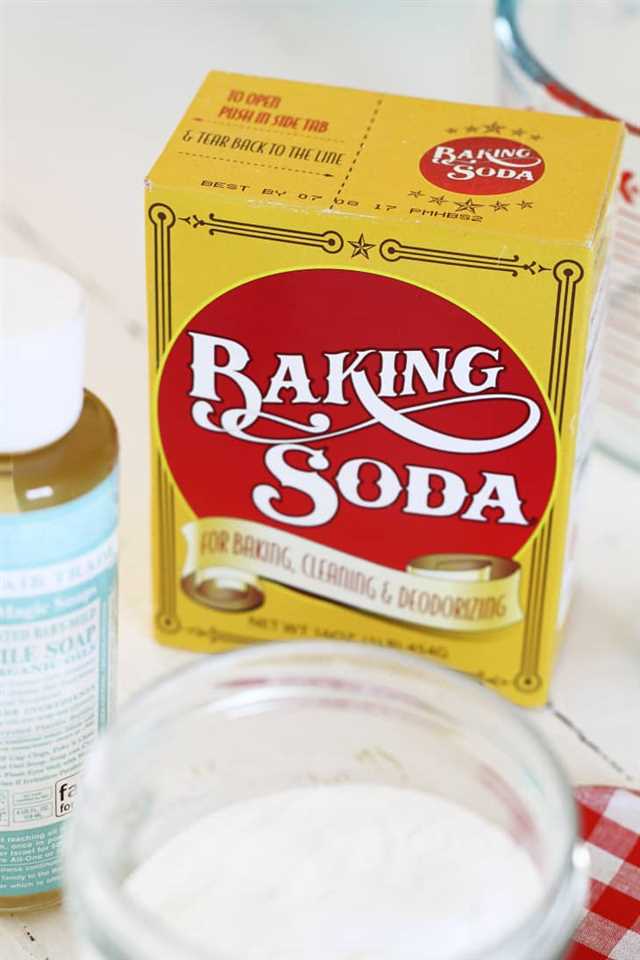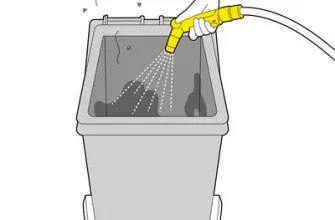
Cleaning your iron is an important task that needs to be done regularly in order to maintain its performance and prolong its lifespan. From time to time, your iron may accumulate limescale, mineral deposits, or burnt residue on its soleplate, which can affect its ability to glide smoothly over fabric and create wrinkles-free clothes. In this article, we will talk about some easy and eco-friendly household hacks to clean your iron and keep it in its best shape.
One popular household item you can use to clean your iron is baking soda. To use this hack, make a paste by mixing baking soda with a little bit of water. Cover the soleplate of your iron with the paste, making sure to spread it evenly. Let it sit for a few minutes, then wipe it off with a warm damp cloth. The baking soda will help remove any tough stains or burnt residue on the surface of your iron, leaving it sparkling clean and ready for use.
Another effective green recipe for cleaning your iron involves using toothpaste. Yes, you read that right! Toothpaste can be used to remove limescale and stains from your iron’s soleplate. Simply apply a small amount of toothpaste on a soft cloth or sponge and gently rub it onto the surface of the iron. Rinse off any leftover toothpaste with a damp cloth and dry it thoroughly before using your iron again.
One more hack that many people swear by is using salt to clean their irons. The coarse texture of salt can help remove tough stains and mineral deposits from the soleplate. To use this method, pour a small amount of salt onto a piece of cloth or paper towel and scrub the surface of the iron. The salt will act as an abrasive and remove any dirt or residue. Afterward, wipe the soleplate with a damp cloth to remove any leftover salt particles.
If you prefer a more natural and eco-friendly approach, you can try using lemon juice or vinegar to clean your iron. Both lemon juice and vinegar have acidic properties that can break down limescale and mineral deposits on the surface of your iron. Simply soak a cloth or sponge in lemon juice or vinegar, and gently scrub the soleplate until the stains or residue are removed. Rinse off the soleplate with water and dry it thoroughly before using your iron again.
One word of caution: while these methods are generally safe to use on most irons, it’s always a good idea to check your iron’s instruction manual before trying any cleaning hacks. Some irons have specific cleaning instructions or may not be compatible with certain cleaning substances. So, make sure to do your research and use these green recipes at your own risk.
In conclusion, keeping your iron clean and in good condition is essential for maximum performance and wrinkle-free clothes. By using these green cleaning recipes with household items like baking soda, toothpaste, salt, lemon juice, or vinegar, you can easily remove limescale, stains, and burnt residue from your iron’s soleplate. Just remember to always follow your iron’s manual instructions, and happy ironing!
- Why Use Green Recipes to Clean an Iron?
- 1. Eco-Friendly
- 2. Safe for You and Your Family
- 3. Effective for Removing Stains and Build-Up
- 4. Budget-Friendly
- 5. Trending Household Hacks
- 6. Safe to Use on Different Iron Surfaces
- 7. Easy to Do-It-Yourself
- Benefits of Using Green Recipes
- Vinegar and Water Solution
- What you’ll need:
- Instructions:
- Step-by-Step Guide on How to Clean an Iron with Vinegar
- Baking Soda Paste
- How to Make and Use Baking Soda Paste to Clean an Iron
- What You Need:
- Step-by-Step Instructions:
- Lemon Juice and Salt Mixture
- Video:
- How to make your custom Green Smoothie for Low Iron deficiency. #smoothie #anemia
Why Use Green Recipes to Clean an Iron?
Keeping your iron clean is essential to ensure its optimal performance and increase its lifespan. Using green recipes to clean an iron not only helps to protect the environment but also allows you to avoid exposing yourself and your household to harsh chemicals. Here are some reasons why using green recipes is the best way to clean your iron.
1. Eco-Friendly

Green recipes use natural and environmentally-friendly ingredients that are safe for the planet. By opting for green cleaning methods, you can contribute to reducing your carbon footprint and make a positive impact on the environment.
2. Safe for You and Your Family
Unlike traditional cleaning products that may contain harmful chemicals, green recipes are made using household items like vinegar, baking soda, and toothpaste that are safe to use around your family. This means you don’t have to worry about any negative health effects.
3. Effective for Removing Stains and Build-Up
Green recipes are just as effective, if not more, than harsh chemical cleaners when it comes to removing stains and build-up from your iron. Ingredients like vinegar and baking soda work wonders in breaking down mineral deposits and getting rid of grime.
4. Budget-Friendly
Most green recipes can be easily made with items you already have in your pantry, which makes them a cost-effective option. Instead of spending money on professional iron cleaners, you can use everyday household items to clean your iron.
5. Trending Household Hacks
Using green recipes to clean an iron has become a popular trend among environmentally-conscious individuals. By following these eco-friendly methods, you can keep up with the latest green cleaning trends and share your knowledge with others.
6. Safe to Use on Different Iron Surfaces
Green recipes can be used on various iron surfaces, including stainless steel and ceramic. These methods are gentle yet effective, ensuring that your iron’s surface is not damaged during cleaning.
7. Easy to Do-It-Yourself
You don’t need any special skills or knowledge to use green recipes to clean an iron. The steps are simple and easy to follow, allowing you to quickly and effortlessly get your iron back in top shape.
By using green recipes to clean your iron, you will not only keep it sparkling clean but also contribute to a healthier environment for yourself and future generations.
Benefits of Using Green Recipes
When it comes to cleaning your iron, using green recipes has several advantages. These methods are eco-friendly and do not involve the use of harsh chemicals that can be harmful to both your health and the environment. By opting for green recipes, you can contribute to a cleaner and greener planet.
- Easily remove stains: Green recipes provide effective solutions to remove various types of stains from your iron. Whether it’s burnt marks, scorched fabric, or sticky residue, these recipes have been tried and tested to deliver excellent results.
- Safe to use: Green recipes typically involve using household items like salt, white toothpaste, or baking soda. These ingredients are non-toxic and safe to use, reducing the risk of any harm to you or your iron.
- Simple and cost-effective: You don’t need to buy expensive iron cleaners or professional cleaning products. Green recipes utilize commonly available items found in your home, making them cost-effective and convenient.
- Preserve the lifespan of your iron: Regularly cleaning your iron with green recipes can help remove build-ups and prevent clogging in the steam vents or holes. This ensures that your iron functions optimally and lasts longer.
- Eco-friendly: By using green recipes, you reduce your impact on the environment. You eliminate the need for harsh chemicals that can contribute to pollution and waste.
So why not give these green recipes a try? Not only will your iron be sparkling clean, but you’ll also be contributing to a greener and healthier planet.
Vinegar and Water Solution
If you are looking for a simple and eco-friendly way to clean your iron, a vinegar and water solution is a great option. This method uses household ingredients that are safe to use and won’t harm the environment.
What you’ll need:
- Vinegar
- Water
- A spray bottle
- A clean cloth
- A small bowl
Instructions:

- Start by unplugging your iron and allowing it to completely cool down.
- In a small bowl, mix equal parts vinegar and water. For example, you can use 1/2 cup of vinegar and 1/2 cup of water.
- Pour the vinegar and water solution into a spray bottle. This will make it easier to apply to the iron.
- Spray the solution onto the surface of the iron, focusing on any burnt or sticky areas.
- Use a clean cloth to gently scrub the surface of the iron. You can also use an old toothbrush for tough stains.
- Once the iron is clean, fill the reservoir with clean water and turn on the steam function. This will help to flush out any remaining vinegar solution.
- Wipe down the soleplate of the iron with a damp cloth to remove any residue.
- Plug in the iron and allow it to heat up. Test it on an old piece of fabric to make sure there are no remaining vinegar smells or residue. If any signs of vinegar are present, repeat the cleaning process.
This vinegar and water solution is an ideal method for cleaning your iron without the use of harsh chemicals. It can effectively remove burnt-on residue, wrinkles, and other stains, leaving your iron sparkling clean and ready for use.
Step-by-Step Guide on How to Clean an Iron with Vinegar
Cleaning your iron with vinegar is an easy and eco-friendly way to keep it sparkling clean. Follow these simple steps to restore the efficiency of your iron:
- Prepare a mixture of equal parts white vinegar and warm water in a cup or bowl.
- Dampen a cloth or sponge with the vinegar solution and use it to wipe the surface of the iron. Pay special attention to any brown or scorched areas.
- If there are stubborn stains or build-up in the steam holes or on the soleplate, dip a cloth or sponge in a paste made from vinegar and baking soda. Gently rub the affected areas to remove the residue.
- For deep cleaning, fill the iron’s water reservoir with a solution of half vinegar and half water. Turn on the iron and let it steam for several minutes, but be careful not to let the solution drip onto your clothes. Afterwards, empty the reservoir and rinse it thoroughly with clean water.
- If there are any mineral deposits or clogs in the steam ducts, use a toothpick or tweezers to carefully remove them.
- Once you have finished cleaning, wipe the entire surface of the iron with a clean, damp cloth to remove any remaining vinegar residue.
Remember to always consult your iron’s instruction manual before cleaning to ensure that you are following the manufacturer’s recommended guidelines.
Cleaning your iron with vinegar is a great way to remove mineral deposits and build-up without the need for harsh chemicals. It is also a cost-effective and eco-friendly alternative to commercial iron cleaners.
If you found this step-by-step guide helpful, be sure to share it with your friends and family. They will appreciate the money-saving and environmentally-friendly tips!
For more cleaning hacks and tips, be sure to sign up for our newsletter and follow us on our social media pages. We regularly share articles on how to keep your house clean and sparkling using household items.
Baking Soda Paste
If your iron is in need of a deep clean, try using a baking soda paste. Baking soda is a versatile household item that can be used for a variety of cleaning tasks, including cleaning your iron.
To make a baking soda paste, simply mix 2 parts baking soda with 1 part water in a bowl. Stir well until a thick paste forms. The paste should be easy to spread but not too runny.
Before applying the baking soda paste to your iron, make sure it is unplugged and cooled down. Apply the paste to the soleplate of the iron and spread it evenly using a clean cloth. Be sure to cover the entire soleplate, including the edges and vents.
Let the paste sit on the iron for about 15-20 minutes to allow it to penetrate any built-up grime or scorched stains. If you have any particularly tough stains, you can gently scrub the area with a toothbrush or scrub brush.
After the paste has had time to work its magic, use a damp cloth to wipe away the paste from the surface of the iron. Make sure to thoroughly rinse the cloth so you don’t transfer any baking soda residue back onto the iron.
If there are any lingering stains or mineral buildups on the iron, you can repeat the process or try using a mixture of vinegar and water to remove them. Simply fill the iron’s reservoir with equal parts vinegar and water and run the iron over a cloth or towel on the highest steam setting. The heat and steam will help to loosen and dissolve any stubborn stains or mineral deposits.
Once your iron is clean and sparkling, it’s important to take steps to prevent future buildups. One easy way to do this is to avoid using materials like paracetamol or toothpaste to clean your iron. These items may seem like convenient cleaning hacks, but they can actually damage the soleplate and internal components of the iron.
Instead, after each use, wipe down the soleplate with a damp cloth to remove any residue or buildups. If necessary, you can use a small amount of mild detergent on the cloth. This will help to prevent any future stains or buildups from forming.
In addition to regular cleaning, it’s also important to properly store your iron. Always make sure the iron is completely cooled down before storing it, and cover the soleplate with a clean cloth or ironing board cover to protect it from dust and dirt.
By following these simple steps and incorporating green cleaning methods, you can keep your iron sparkling clean and eco-friendly. Say goodbye to scorched stains and mineral buildups, and hello to fresh, wrinkle-free clothes!
How to Make and Use Baking Soda Paste to Clean an Iron
Cleaning an iron is an important part of maintaining its performance and prolonging its lifespan. One effective and eco-friendly method to clean an iron is by using a baking soda paste. Baking soda, also known as bicarbonate of soda, is a common household item that has numerous cleaning properties.
What You Need:
- Baking soda (bicarbonate of soda)
- Water
- A small bowl
- A clean cloth or sponge
Step-by-Step Instructions:
- Start by unplugging the iron and letting it cool down completely. This is important to avoid any accidental burns during the cleaning process.
- Mix equal parts of baking soda and water in a small bowl to create a paste-like consistency. You can adjust the amount of baking soda and water based on the size of your iron and the amount of cleaning needed.
- Use a clean cloth or sponge to apply the baking soda paste onto the surface of the iron, focusing on areas with stains or mineral deposits. Gently rub the paste onto the surface using circular motions.
- If the mineral deposits or stains are stubborn, you can use a toothbrush or tweezers to scrub the paste into the affected areas.
- Once the paste has been applied, let it sit on the surface of the iron for about 10-15 minutes. This allows the baking soda to work on breaking down the stains and mineral deposits.
- After the baking soda paste has had time to work, use a clean cloth or sponge to wipe away the paste from the surface of the iron.
- To remove any remaining residue or paste, dampen a cloth or sponge with water and wipe the iron again.
- If the water reservoir of your iron has mineral deposits or is stained, you can fill it with a mixture of equal parts water and vinegar. Let it sit for a few minutes, then empty and rinse the reservoir.
- Once cleaned, fill the water reservoir with clean water and iron a piece of old newspaper or a white cloth to remove any remaining traces of the cleaning solution.
Using baking soda paste to clean an iron is a simple and effective method that can be done at home without the use of harsh chemicals. It is a natural way to remove stains and mineral deposits and keep your iron in good condition.
Lemon Juice and Salt Mixture
One of the best natural ways to clean an iron is by using a mixture of lemon juice and salt. This homemade solution is effective in removing limescale and other mineral buildups that can affect your iron’s performance.
To create this magical mixture, simply mix equal parts lemon juice and salt in a bowl. The acidic properties of the lemon juice work like magic in dissolving the limescale, while the abrasive nature of the salt helps scrub away any stubborn stains.
Once you have the lemon juice and salt mixture ready, you can proceed with cleaning your iron. Start by unplugging the iron and allowing it to cool down completely. It’s important to never clean your iron while it’s still hot to avoid burning yourself.
Next, dampen a clean cloth or sponge with the lemon juice and salt mixture. Gently scrub the surface of the iron, paying attention to any areas with stubborn limescale or mineral buildups. If the stains are particularly stubborn, you can apply a paste of lemon juice and salt directly onto the affected area and let it sit for a few minutes before scrubbing.
After cleaning the surface of the iron, you can also remove any burnt or sticky residue from the iron’s plate. Cover an old white cloth or towel with a layer of table salt and run the iron over it on a low-heated setting. The salt will help absorb any remaining residues, leaving your iron clean and ready to use.
It’s worth noting that while lemon juice and salt are effective natural cleaners, they may not be suitable for all types of irons. Some manufacturers and professionals advise against using this method on steam irons or irons with non-stick plates. Always refer to the manufacturer’s instructions or consult a professional before attempting any cleaning method.
In conclusion, cleaning your iron with a lemon juice and salt mixture is an eco-friendly and affordable hack that can remove limescale and other mineral buildups. Just be sure to follow the proper instructions and take precautions to avoid damaging your iron.








